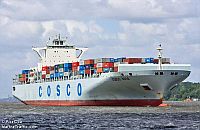 There are reports of an unsuccessful attack on the Cosco Asia, a 10,000 TEU container ship, which was transiting the Suez on Saturday night. As reported by the BBC: Canal authority head Mohab Mamish said a “terrorist element” targeted a Panama-flagged vessel on Saturday, but it was undamaged. There were reports of two blasts, but details of the attack are unclear… The unconfirmed reports said there were two explosions at 12:30 GMT on Saturday as the ship, Cosco Asia, passed through the waterway.
There are reports of an unsuccessful attack on the Cosco Asia, a 10,000 TEU container ship, which was transiting the Suez on Saturday night. As reported by the BBC: Canal authority head Mohab Mamish said a “terrorist element” targeted a Panama-flagged vessel on Saturday, but it was undamaged. There were reports of two blasts, but details of the attack are unclear… The unconfirmed reports said there were two explosions at 12:30 GMT on Saturday as the ship, Cosco Asia, passed through the waterway.
An amazing short video on the art and science of sailing the America’s Cup AC 72s on hydrofoils. When “foiling” these boats have been exceeding 40 knots.
See also: ABOUT THE AC72: A NEW-AGE SPEEDSTER
The strange saga of “A Whale” continues. The ship is reported to have recently come under fire by a Libyan Navy patrol boat, as it attempted to enter the Es Sider terminal in Northern Libya, apparently without clearance. The ship turned away from the port and no significant damage was reported. Libya has warned that it will attack and destroy any tanker illegally exporting oil, which the defense forces believe the charterers of “A Whale” were attempting to do. This is only the most recent mis-adventure for this misbegotten ship.
In July we posted, The Sorry Saga of the Ore/Oiler A Whale – From Miracle Skimmer to Bankruptcy & Abandoned Sailors. It is an odd tale about “A Whale” a 319,000 DWT Ore/Oiler which arrived on the Gulf Coast during the Deepwater Horizon oil spill in 2010. Its owners claimed that it was the world’s largest and highest tech oil skimmer. On testing however, it didn’t actually skim any oil, so it was sailed away. We next heard of “A Whale” a few months ago when it was reported that its now bankrupt owner, the TMT Group, had abandoned the crew without pay, food or water. Subsequently, it was reported that the crew was paid and fed. We can only hope that the owners of “A Whale” find her paying cargo and otherwise keep her out of trouble in the future.
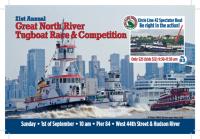 Great activities on the water, on both coasts, this Labor Day weekend. In San Diego, the annual Festival of Sail began yesterday with a Parade of Sail and continues through Monday with lots of great activities. as described by San Diego Magazine, “Festival of Sail is the LARGEST Tall Ship festival on the west coast and is hosted at the Maritime Museum of San Diego, transforming the North Embarcadero into a nautical theme park for 4 adventure filled days.” Click here to learn more.
Great activities on the water, on both coasts, this Labor Day weekend. In San Diego, the annual Festival of Sail began yesterday with a Parade of Sail and continues through Monday with lots of great activities. as described by San Diego Magazine, “Festival of Sail is the LARGEST Tall Ship festival on the west coast and is hosted at the Maritime Museum of San Diego, transforming the North Embarcadero into a nautical theme park for 4 adventure filled days.” Click here to learn more.
On the banks of the Hudson River in New York City, the Working Harbor Committee is sponsoring the 21st Annual Great North River Tug Boat Race and Competition on Labor Day, September 2. A Parade of Tugs passes by Pier 84 at 10:00 AM with the race starting at 10:30. Click here to learn more.
 Dick Newick, the brilliant multihull designer, has died at 87. His designs, particularly his trimarans, revolutionized the world of multihull sailing. His designs are remarkably graceful, simple, light and astonishingly fast. In a very real sense, the history of multihull design can be divided into Before-Newick and After-Newick. Before-Newick, trimarans were ugly and boxy. Newick’s designs, when they first arrived in the 70s and 80s, seemed almost other-worldly, with sweeping lines and amas that rested lightly on the water.
Dick Newick, the brilliant multihull designer, has died at 87. His designs, particularly his trimarans, revolutionized the world of multihull sailing. His designs are remarkably graceful, simple, light and astonishingly fast. In a very real sense, the history of multihull design can be divided into Before-Newick and After-Newick. Before-Newick, trimarans were ugly and boxy. Newick’s designs, when they first arrived in the 70s and 80s, seemed almost other-worldly, with sweeping lines and amas that rested lightly on the water.
The first Newick design to catch the world’s attention was not a trimaran but a proa. Newick designed Cheers, for Tom Follett who placed third in the Observers Single-handed Trans-Atlantic Race (OSTAR) of 1968, the first multihull to place in the race. Soon Newick designed trimarans were winning ocean races around the world. In 1980 Phil Weld sailed, Moxie, a Newick designed trimaran to win OSTAR, the first American ever to do so. Weld set a new race record of 17 days 23 hours and 12 minutes.

Photo: Doug Mangum
The 29th Annual Gloucester Schooner Festival, in all its glory, is being held again over Labor Day weekend with waterfront tours, public lobster bakes, fireworks, and of course, many lovely schooners. Sunday begins with a parade of sail before the beginning of the start of Mayor’s Race for the Esperanto Cup, Ned Cameron Trophy and Betty Ramsey Trophy off Eastern Point. Click here to learn more.
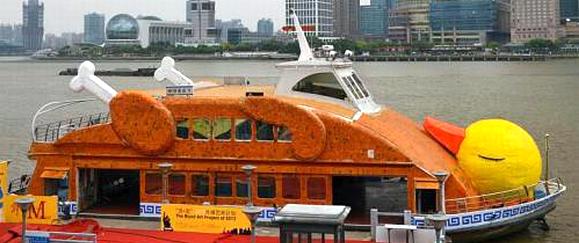 In June, we posted about the Dutch artist Florentijn Hofman’s traveling 16.5 metre-tall “Rubber Duck,” which has visited 13 cities in nine different countries. It last visited Hong Kong harbor and is now reported to be on its way to Pittsburgh. In the spirit of fun, Shanghai now has its own interpretation of a “roasted rubber duck,” with crispy brown skin, drumsticks in the air and the duck’s head turned aft. The “roasted rubber duck” is in fact a working harbor ferry.
In June, we posted about the Dutch artist Florentijn Hofman’s traveling 16.5 metre-tall “Rubber Duck,” which has visited 13 cities in nine different countries. It last visited Hong Kong harbor and is now reported to be on its way to Pittsburgh. In the spirit of fun, Shanghai now has its own interpretation of a “roasted rubber duck,” with crispy brown skin, drumsticks in the air and the duck’s head turned aft. The “roasted rubber duck” is in fact a working harbor ferry.
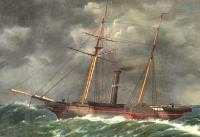 In 1970, fisherman discovered a shipwreck in about 85 feet of water, ten miles off the Absecon Inlet on the New Jersey coast. For more than 40 years, divers have visited the unidentified wreck. Now the National Oceanic and Atmospheric Administration (NOAA) has positively identified the wreck as the iron-hulled side-wheel steamer, Robert J. Walker, a U.S. Coast Survey vessel that sank in 1860 after a violent collision with a 250-ton schooner. Twenty sailors aboard the Walker died, making it the worst accident in the history of the U.S. Coast Survey or its successor, NOAA.
In 1970, fisherman discovered a shipwreck in about 85 feet of water, ten miles off the Absecon Inlet on the New Jersey coast. For more than 40 years, divers have visited the unidentified wreck. Now the National Oceanic and Atmospheric Administration (NOAA) has positively identified the wreck as the iron-hulled side-wheel steamer, Robert J. Walker, a U.S. Coast Survey vessel that sank in 1860 after a violent collision with a 250-ton schooner. Twenty sailors aboard the Walker died, making it the worst accident in the history of the U.S. Coast Survey or its successor, NOAA.
NOAA says shipwreck off southern NJ coast is steamer that sank in 1860, killing 20 sailors
I was saddened to learn that the singer that I knew as Lou Killen died early this month after a six year battle with cancer. Killen was an influential voice in the British folk song revival of the 50s and 60s and a wonderful singer of sea songs and shanties. He was featured in a dozen albums and contributed to over sixty and for several years was a member of the Irish folk group the Clancy Brothers. He helped popularize classics including Leaving of Liverpool, Pleasant and Delightful and The Wild Rover.
In 2010, at the age of 76, Killen surprised friends and fans alike when he began living openly as a woman, performing in women’s clothing and a wig. In 2012, he underwent a sex-change operation. As noted in the New York Times: Adopting the name Louisa Jo Killen, she continued to perform for almost two years, by most accounts winning over most of Louis Killen’s fans and all of his friends.
Here is Lou Killen singing Ewan MacColl’s Shoals of Herring
Oliver Hazard Perry‘s message to his superiors was brief: “We have met the enemy and they are ours; two ships, two brigs, one schooner and one sloop.” Perry’s victory at the Battle of Lake Erie on September 10, 1813, was one of the most strategically important naval battles of the War of 1812. Starting on Thursday, a thirteen day commemoration of his victory will be held at site of the battle at Put-In Bay, Ohio. Click here to learn more. A short video of featuring the Brig Niagara.
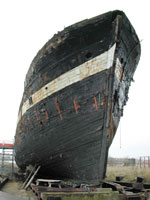 The two headlines in the BBC are from the same day and posted only an hour apart. The first reads “World’s oldest clipper ship transported to Australia.” The second – “City of Adelaide clipper ship export ban sought.” Both articles are about the clipper ship, City of Adelaide, the world’s oldest surviving composite clipper ship and the only surviving sailing ship built to give regular passenger and cargo service between Europe and Australia. She is five years older than the composite clipper, Cutty Sark.
The two headlines in the BBC are from the same day and posted only an hour apart. The first reads “World’s oldest clipper ship transported to Australia.” The second – “City of Adelaide clipper ship export ban sought.” Both articles are about the clipper ship, City of Adelaide, the world’s oldest surviving composite clipper ship and the only surviving sailing ship built to give regular passenger and cargo service between Europe and Australia. She is five years older than the composite clipper, Cutty Sark.
After numerous delays, the Australian consortium intends to move the old ship by barge to Adelaide, Australia in just less than two months. Meanwhile, the group which wants to keep the ship in Scotland, has asked the Reviewing Committee on the Export of Works of Art and Objects of Cultural Interest, to intervene to stop the move.
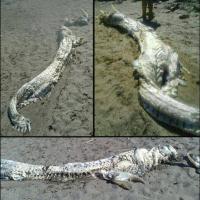 It is around 13 feet long, appears to have horns and stinks to high heaven. A carcass washed ashore on Luis Siret Beach in Villaricos, Spain which is being widely referred to a “sea monster.” Perhaps a bit small to be truly monstrous, the stench, nevertheless, was reported to be sufficiently foul to justify burying the beast. On further examination, what were reported to be horns appear to be dislocated bones. Samples are being taken to local laboratories to try to get a better idea what he creature may have been.
It is around 13 feet long, appears to have horns and stinks to high heaven. A carcass washed ashore on Luis Siret Beach in Villaricos, Spain which is being widely referred to a “sea monster.” Perhaps a bit small to be truly monstrous, the stench, nevertheless, was reported to be sufficiently foul to justify burying the beast. On further examination, what were reported to be horns appear to be dislocated bones. Samples are being taken to local laboratories to try to get a better idea what he creature may have been.
Some experts suggest that the carcass is that of a thresher shark. Another likely possibility could be a Regalecus glesne, a giant oar fish, the world’s longest bony fish, which can grow to 35 feet in length, though there have been unconfirmed sighting of oar fish reaching 56 feet long. Giant oarfish swim in most oceans of the world, primarily in the mesopelagic layer, ranging as deeply as 1,000 metres (3,300 ft) up to 20 metres (66 ft). Many sighting of “sea serpents” may have been rare surface sightings of giant oar fish. Oddly, the giant oar fish is also called the “king of herrings.” While the oar fish may qualify as a sea monster based on appearance and length, it has no teeth and eats mostly krill.
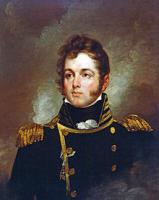 Oliver Hazard Perry was born near Newport, Rhode Island on August 23,1785. He died of yellow fever on his 34th birthday in 1819. Perry went sea as a midshipman at the age of 13. He was given his first command, of the schooner USS Nautilus, at the age of 20 in the Battle of Derma in the First Barbary War.
Oliver Hazard Perry was born near Newport, Rhode Island on August 23,1785. He died of yellow fever on his 34th birthday in 1819. Perry went sea as a midshipman at the age of 13. He was given his first command, of the schooner USS Nautilus, at the age of 20 in the Battle of Derma in the First Barbary War.
Eight years later, in 1813, Perry would command nine US Navy vessels at Put-In-Bay, Ohio in Lake Erie, where he decisively defeated a British squadron. The Battle of Lake Erie, as it would become known, turned the tide of the War of 1812 in he west, giving control of Lake Erie to the American and denying the British their supply lines. It was one of the two strategically important American naval victories in the war. Ironically, both victories were in fresh water hundreds of miles from the occasion.
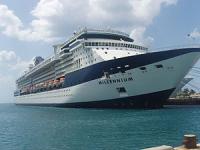 Is pod propulsion the best or worse thing to ever happen to cruise ships? Celebrity Cruise Line just cancelled the cruises for the rest of season in Alaska on the Celebrity Millennium due to failures in its pods. It had already cancelled two previous cruises due to the malfunctions.
Is pod propulsion the best or worse thing to ever happen to cruise ships? Celebrity Cruise Line just cancelled the cruises for the rest of season in Alaska on the Celebrity Millennium due to failures in its pods. It had already cancelled two previous cruises due to the malfunctions.
The Rolls Royce “mermaid pods” installed on the Celebrity Millenium class ships are a rotating pod propulsion system which serves as rudders and thrusters as well as propulsion. In theory, they are highly efficient and provide the sort of maneuverability that large cruise ships operating mostly without tug support need to get in and out of port. The only problem is making them work.
A Russian military Zubr-type hovercraft made a surprise arrival at a crowded beach recently in what the Russian defense ministry described as a “tactical mission in a military owned area.”
Navy hovercraft surprises sunbathers as it lands on Russian beach
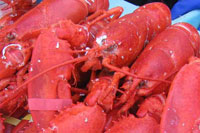 Maine has been experiencing a lobster boom. After catching an average of 20 million pounds of lobster per year for decades, Maine’s 5,500 lobster-men landed a record 125 million pounds of lobsters last year. Will this boom, however, end in a bust? Some experts think so. The question is important because the other ground fisheries in the Gulf of Maine; cod, haddock, pollock and hake; have been effectively fished out. Lobster accounts for 80% of the total value of the Maine fisheries. If lobster yields drop dramatically, the economic impact on the coast could be dire.
Maine has been experiencing a lobster boom. After catching an average of 20 million pounds of lobster per year for decades, Maine’s 5,500 lobster-men landed a record 125 million pounds of lobsters last year. Will this boom, however, end in a bust? Some experts think so. The question is important because the other ground fisheries in the Gulf of Maine; cod, haddock, pollock and hake; have been effectively fished out. Lobster accounts for 80% of the total value of the Maine fisheries. If lobster yields drop dramatically, the economic impact on the coast could be dire.
Why could the boom end in a bust? Climate change – specifically warmer waters. The lobster fishery in Long Island Sound collapsed in 1999 after a shell disease wiped out lobster stocks in Connecticut and Rhode Island. The disease coincided with a rise in water temperature. The region’s lobster fisheries have never recovered.
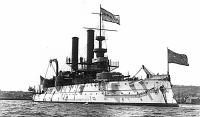
Battleship Iowa
In May, we posted about the discovery of a rare Howell torpedo by Navy dolphins in the Pacific off San Diego. The Howell torpedo was the first self-propelled torpedo in United States Navy service. Only fifty were built and, until the recent discovery, only one was known to have survived. The newly discovered torpedo was marked, “U.S.N. No. 24.” But which ship fired the torpedo?
Mikala Pyrch, a George Washington University intern with Naval History and Heritage Command’s Underwater Archeology Branch, successfully matched the ship to the torpedo.
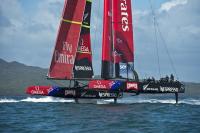
Photo: Guilain Grenier/FFV
In each of the first three races of the the Louis Vuitton finals to determine which challenger will compete for the America’s Cup, the race has been decided by mechanical failure. The series now stands with Emirates Team New Zealand, 2 and the Italian team, Luna Rossa, 1. In Race 1, the Italians’ daggerboard failed. The Kiwi boat was also damaged but crossed the finish line. In Race 2, the Kiwis lost their electrical system and hydraulics and had to pull out of the race, while a broken wing control scuppered the Italians in Race 3. Emirates Team New Zealand Captain Dean Barker is quoted as saying, “It’d be nice if we can get one race where both boats race all the way till the end.” Wouldn’t it though.
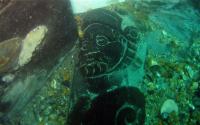
Wooden carving found on the wreck.
Two years ago we posted about the efforts by a Bournemouth University marine archaeology team to save the a mysterious ship known only as the Swash Channel Wreck, after its location off the Dorset coast. The team is now raising the ship’s 27ft, 2.4 tonne rudder, complete with Baroque carved face, to the surface for further study.
Despite the years of study and the recovery of over 1,000 artifacts, the identity of the 400 year old 130ft ship remains a mystery. More than 40 per cent of the ship survives, including parts of the ship’s forecastle, complete with galley and gunports.
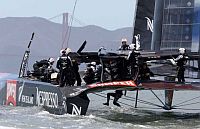
Photo: Eric Risberg
In the first two races of the Louis Vuitton finals to determine which challenger will compete against the Team Oracle for the America’s Cup, both races were determined by which boat didn’t break before crossing the finish line. In race one, Emirates Team New Zealand won after Luna Rossa, the Italian boat, broke a daggerboard. Emirates Team New Zealand did suffer a nose-dive as the boat dropped off it foils, but managed to finish the race, albeit with damage and a somewhat smaller crew. Two Kiwi sailors fell off in the crash and were picked up safely from the water by a support boat. In the second race, Emirates Team New Zealand suffered an electrical failure which shut down the boat’s hydraulics, effectively knocking it out of the race. Sail Magazine is referring to the Americas Cup as a “demolition derby.”
At this point, the current America’s Cup looks like an expensive and dangerous farce. Even the event sponsors have admitted that the AC72 catamarans being raced are too expensive and that the cost has limited the number of boats racing.
